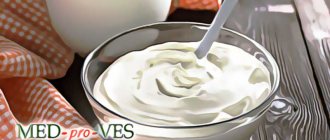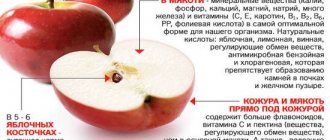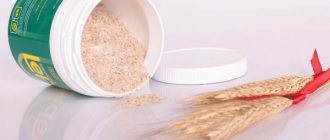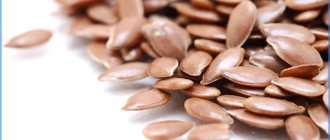If you read our blog, then you probably attach great importance to the issue of choosing quality food products.
Like 0
289
Today we invite you to come into your kitchen together or go to the shelves in a store and read the labels. Do you study them or just take a quick glance at the total calories, weight or production date?
For many of us, all these tables, numbers and percentages on the packaging represent a lot of incomprehensible (and unknown for what purpose) information. However, you can get a lot of benefit from it. Let's figure out what the labels tell us.
- 162
More details - 222
More details
- 168
More details
- 222
More details
What should be written on the label
The label must contain not only the name of the product and its manufacturer, but also the amount of proteins, fats, carbohydrates and calories per 100 g of product.
The composition of the product looks like a list - in a line separated by commas or a column. The bright inscriptions “non-GMO”, “natural”, “dietary” located on the label have nothing to do with the composition of the product. If a foreign-made product does not have a sticker with a translation into Russian and the coordinates of the supplier in Russia, the product most likely entered the market illegally and may be of poor quality. Buy only products with easy-to-read labels that indicate the nutritional value and composition of the product. What you need to know about nutritional supplements
A variety of food additives are an integral part of the modern nutrition industry. To avoid the fear of unfamiliar words on food labels and to know what exactly you are eating, read our materials. — The main thing about food additives — How additives with code “E” are separated — About the safety of food additives — The main thing about sweeteners — More information about the types and permissible dosages of sugar substitutes
Product labeling
Almost any product in a store or supermarket has its own labeling, consisting of a list of basic elements: product name, full composition, production date, expiration date and storage conditions. In addition, information about the manufacturer and some other data are indicated depending on the specifics of the product. Please note that in the vast majority of cases, the main information for the consumer is the composition. Useful information for buyers and important for manufacturers: all ingredients on the label are indicated in relation to their quantity in the product. The components that are most numerous come first, and then they go in descending order.

Today it is difficult to find food products that do not contain additives. And most buyers either do not know at all what is indicated and how, or do not pay much attention to them. But the ability to determine what and what “E-shka” means is very important. Researchers claim that in just one year, an average person eats up to two and a half kilograms of synthetic substances, which enter the body in the form of additives. That is, a single consumption of a product with additives will not cause any particular harm to a healthy body, but their stable entry into the digestive system is fraught with the development of many serious diseases.
We list the most dangerous additives that you should avoid at all costs:
- Preservatives E200-E299. This group is extremely dangerous for the body. The only exceptions are acetic acid, which is designated E260-263, as well as lactic acid (E270) and dimethide dicarbonate (E242). We strongly recommend that you write down these symbols somewhere and use them as a guide when choosing food products.
- Artificial sugar substitutes. The most dangerous are aspartame E951 and saccharin E954. If you regularly eat foods with these sweeteners, severe headaches, deterioration in general health, and weakness in the body are quite possible. There is information that such additives are carcinogenic. Despite careful production control, such sweeteners are sometimes found in chewing gum, sweet drinks, syrups, sauces, instant coffee and some other products.
- E320 – butylated hydroxyanisole. This is an antioxidant that causes the human circulatory system to suffer. It causes red blood cells to not receive the required amount of oxygen.
- Monosodium glutamate E621. Powerful flavor enhancer. It is often found in various chips, crackers, packaged fish for beer, ready-to-eat seaweed salads, salty sauces and other products that have a pronounced taste. Please note that many of these products are very popular with children. Therefore, carefully monitor what you buy for them and what they buy themselves. Like sweeteners, flavor enhancers cause headaches, pain in the arms and legs, and cause hunger. But most importantly, long-term use can cause the development of Parkinson’s and Alzheimer’s diseases.
- E100-E199 – dyes. Most modern dyes are piece dyes. Accordingly, they pose a danger to health and primarily to the intestines. E100, E101, E140-141, E 160-160c-160d-E160b, E162, E163, E170, E175 are considered safe. The rest should be avoided.
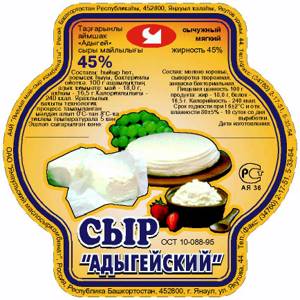
Some time ago, not all components were indicated on the label, which is why buyers were often misled. However, today this issue is regulated at the state level, so the composition indicated on the product packaging must be complete. But whether its customers can read it is a completely different question.
Composition per 100 grams or per serving
The composition is usually indicated per 100 g of product. The package may contain more or less than this amount. Therefore, the content of certain ingredients will have to be recalculated to the actual weight of the package. Sometimes the composition of a product is indicated per serving, usually weighing less than 100 g, and there may be several of them in the package. In this case, you need to carefully look at how many servings the package contains and how to measure them. Always pay attention not only to the composition of the product, but also to the weight of the package and the number of servings in it.
Label design: how to embrace the immensity?
“There are a lot of design requirements,” says Alexey Krygin, designer of a large bakery.
. – Marketers provide designers with product information cards with a large amount of information that needs to not only fit in, but also be made as attractive as possible, using the brand’s color scheme. Moreover, a label today is not just a set of data. If desired, the manufacturer can turn it into a sign of difference between the original product and the counterfeit. Almost always you have to make a compromise - fit all the necessary text, but at the same time reduce the font size.
What does "Cholesterol Free" mean?
This advertising slogan is sometimes placed on products that never contained cholesterol in order to attract additional attention. For example, it is not found in any vegetable oils, since cholesterol is a product of exclusively animal origin. Cholesterol-free foods are not necessarily very healthy. For example, there is no cholesterol in spreads made from vegetable oils, many confectionery fats and cheap margarines. These foods are high in calories and contain trans fats. Treat advertising slogans on packaging with healthy skepticism and pay more attention to the composition.
How to identify fast carbohydrates
Not all carbohydrates are sugar. If a product contains a lot of carbohydrates, but sugar is not in the list of ingredients, or it is in last place, the product contains mainly slow carbohydrates. However, even in a product labeled “sugar-free,” the manufacturer may add extra fast carbohydrates. Sucrose, maltose, corn syrup, molasses, sugar cane, corn sugar, raw sugar, honey, fruit concentrate are also sugar. Carefully control the amount of any sugar in foods - it always adds extra calories.
Nutritional value of products
Calorie content. When purchasing products, be sure to pay attention to the nutritional value of the products. Often calorie content is indicated per 100g of the product, so do not forget to look at the total weight, but there are also products on the labels that indicate the calorie content contained in the portion sold. Of course, for those who care about their figure, it is better to choose products with low calorie content, but this advice is relative, since you need to adhere to your daily calorie intake (on average 2000-2500 kcal) and start from this when choosing products with one or another calorie content. Of course, along with calorie content, it is also important to maintain a balanced, proper diet to pay attention to the amount of proteins, fats and carbohydrates contained in the product. For proper functioning of the body and a slim, fit figure, it is necessary to maintain the balance of BJU, otherwise the body will definitely make itself felt.
Fats. You should closely monitor the fat content of the product; this indicator is even more important than the total calorie content of the product itself. The type of fat in the product is also important; it can be either pure fat, which is not so scary, or various types of trans fats and saturated fats. It is saturated fats and trans fats that you should avoid. The consumption of such modified fats affects the cardiovascular system, liver function and the body as a whole. Margarine contains a large concentration of such fats, and therefore all baked goods made on its basis; you should also avoid semi-finished products and fast foods; for the manufacture of these products, deep-frying fat is used, which contains a high concentration of hydrogenated fatty acids.

Carbohydrates. There are many carbohydrate-free diets, since it is believed that it is carbohydrates that have a detrimental effect on our figure, we can agree with this, but only partially. When the key component of carbohydrates, sugar, enters the body, the level of glucose in the blood rises and the person feels a surge of strength and satiety; as the level of glucose drops, lethargy and a feeling of hunger are felt. The absorption of carbohydrates and their deposition on our problem areas depends on how intensively this process proceeds. Not all carbohydrates are sugar in its pure form; carbohydrates are divided into fast and slow (simple and complex). fast carbohydrates enter the body , the process described above proceeds at an accelerated rate, we very quickly receive a charge of energy, but it does not last long and after 10-15 minutes the energy runs out and we again want to chew something. Fast carbohydrates are found directly in sugar, baked goods, various sweets, white rice, bananas, sugary drinks, etc. Be careful when studying labels, sugar is often replaced with corn syrup, sucrose, molasses, maltose, fruit concentrate and honey, but the essence is different this does not change, these are all fast carbohydrates. The completely opposite situation occurs with slow or complex carbohydrates . The digestion process is slow, blood sugar levels rise gradually, thereby giving satiety and energy for a longer time. Complex carbohydrates are found in cereals (oatmeal, buckwheat, dark rice), durum wheat pasta, wholemeal bread, peas, beans, potatoes, etc. From all of the above, we can conclude that for a slim figure, you should choose complex or slow carbohydrates. However, do not forget about a sense of proportion, because the daily carbohydrate intake is on average only 350-500g.
Squirrels. Protein is simply necessary for the body, especially during weight loss; it helps build muscle fibers and leaves muscle tone normal even while burning extra pounds. Protein is found in meat, dairy products, eggs, legumes, and fish. Do not forget that the daily protein intake should be at least 80 g.
Where to look for extra sugar
Excess fast carbohydrates are found in sweet soda, nectars, juice and energy drinks. A glass of regular fizz can contain up to 8 teaspoons of sugar. Especially carefully study the composition of so-called healthy products - muesli, cereal bars, instant cereals and products for children - manufacturers often add extra sugar to them. Try not to buy products with “hidden” sugar at all - because of them, the caloric content of your diet can completely get out of control.
How to identify trans fats
Trans fats are a form of fatty acid molecules that are formed during the creation of margarine from vegetable oil. Nutritionists recommend limiting their consumption, since they, like saturated fatty acids, significantly increase the risk of developing cardiovascular diseases. In Russia, there are no requirements yet to indicate the amount of trans fats on product labels, so the presence of hydrogenated or saturated vegetable fats in a product should be alarming. This is especially important for products that contain vegetable fats that are artificially made solid: margarines, cooking oils, spreads, cheap candies, chocolate and cookies. Avoid cheap fats and products based on them - the quantities and quality of real butter and vegetable oil are easier to control.
What should the packaging look like?
The updated technical regulations indicate the sizes of labels for products with milk fat substitute.
Thus, the mandatory part of the name containing the phrase “milk-containing product with a milk fat substitute” and information about the production technology of the product must be printed in a font of at least 2.5 millimeters. A mandatory label “Contains vegetable oils” has also been introduced, with a size of at least 3 millimeters. An important addition: the document clearly states that both inscriptions must be on the front side of the package or label and be contrasting, that is, easy to read.
To clearly see how the new law will work, we took milk-containing products with milk fat substitute and redrew their packaging in accordance with the new regulations. This is what happened.
Oil "Peasant"

This is “Butter”, which now cannot be called oil, since this product contains vegetable fats, as follows from the caption “vegetable-butter”. Guided by the new rules, we removed the large inscription “butter” from the packaging, adding in its place the necessary instructions about the content of milk fat substitutes and the production method. The inscription “Peasant Recipes” had to be left - although this is a strong association with real butter, the name of this brand can hardly be called a dairy term.
Curd product “Farmerskiy”
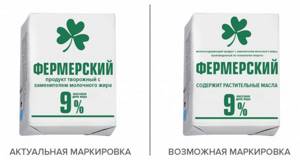
Another example is the “curd product” that was present on the market. The manufacturer, according to the new rules, had to remove this dairy term from the packaging, replacing it with “a milk-containing product with a milk fat substitute, produced using cottage cheese technology.”
An indication of the content of vegetable oils is also added to the packaging.
Unfortunately, the manufacturer has the right to leave the inscription “farm” in the name, although this is a marketing ploy that means absolutely nothing. As we wrote in one of the materials, the presence of this word now does not tell the buyer anything. It so happens that the buyer is more willing to take a product from the shelf with this inscription, so advertisers and marketers take advantage of this. Roskachestvo is also fighting the phenomenon of marketing gimmicks and advocates banning them. Note
The appearance of product packaging in the “after” column is an assumption based on new labeling regulations. Definitely, designers and marketers of manufacturing companies will be looking for solutions on how to comply with the law and at the same time show their products as profitably as possible. However, our examples also show that even very simple actions are enough for the difference to be slightly noticeable. So, the main rule for choosing products remains unchanged - you need to carefully read the packaging and current research by Roskachestvo.
Where to pay attention to salt
Salt in a product may be referred to as either “salt” or “sodium.” Look carefully at the amount of salt in the product - the closer it is to the beginning of the list of products, the greater its share in the food. A healthy dose of salt per day is about 5 g (teaspoon). In terms of sodium – 1.5-2.0 g of sodium, which is about a third in salt. Excess salt is found in all processed meat products: sausages, smoked meats, dried and salted meat, canned meat. There is a lot of salt in hard cheeses, salted and smoked fish, canned food, pickled vegetables, chips, crackers, fast food and even bread. It is easier to control the amount of salt in your diet if you cook at home and do not overuse hard cheeses and smoked meats.
Fiber (fiber)
One micronutrient that is often overlooked but important for nutrition is fiber. This is often the biggest deficiency in our diet. Fiber helps you lose weight, removes cholesterol and nourishes healthy intestinal flora. Choose foods that have at least 3 grams of fiber per serving. While fiber is mostly found in whole foods such as fruits, vegetables and legumes, the most fiber in prepared foods is found in protein bars, granola and whole grain breads. You need to get at least 30 grams of fiber per day.
What does the letter E mean in the name of nutritional supplements?
The letter E in the designation of food additives means that the substance has been approved by a special WHO commission for use in the European food industry. Numbers 100-180 – dyes, 200-285 – preservatives, 300-321 – antioxidants, 400-495 – emulsifiers, thickeners, gelling agents. Not all “E”s are of artificial origin. For example, E 440 is apple pectin, which is beneficial for digestion, E 300 is vitamin C, and E306-E309 is the well-known antioxidant vitamin E. The fewer additives a product contains, the easier it is to understand what it is made of. Carefully study the composition of any product.
Pasteurized or sterilized?
The pasteurized product is processed at temperatures up to 70 degrees Celsius for a certain time. The harmful bacteria in it died, and most of the vitamins remained intact. Such products last from several days to weeks. Sterilization involves processing at temperatures of 100 degrees or higher. A sterilized product is stored longer than after pasteurization, but the content of vitamins in it drops by two or more times. Pasteurized products are healthier, but sterilized products last longer and sometimes do not even require refrigeration.
How to choose dairy products?
Milk is better if it has 1.5-2.5% fat content.
Pasteurized milk is processed at 70 degrees, which kills all bacteria and preserves vitamins. This milk can be stored for a very short time.
Sterilized milk is processed at temperatures above 100 degrees, which allows for a long shelf life. There are no bacteria in it, nor are there any vitamins.
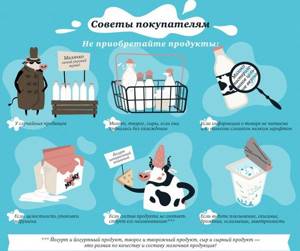
Infographics from AiF
Cottage cheese – I wrote about how to choose the right cottage cheese in a separate article. There are also reviews of some specific brands. Check it out if you haven't read it yet.
And once again... Curd, curd product, glazed cheese, sweet mass - all this cannot be called healthy products! On real cottage cheese it will simply be written COORD. In addition to cottage cheese, the manufacturer can add whatever he wants to the “curds”! And most often it will be various vegetable fats. By the way, if you like cheese curds, then make sure that it says glazed curd cheese on them. There may be no cottage cheese at all in a regular glazed cheesecake. And be sure to look at the price. A high-quality dairy product cannot be too cheap.
Kefir - it is best to buy the simplest one, with a fat content of up to 2.5%. There are such options as “kefir product”, etc., which may also include something unnecessary and harmful.
There was also a separate guide for yoghurts. But remember here that yogurt and a yogurt product are not the same thing.
I recently came across an interesting product here, I even took a photo as a souvenir. If you look at the large letters from afar, it may seem that this is ordinary milk powder. But no! As you know, powdered milk replaces regular milk. But I found a substitute for milk replacer. And this happens!) The composition, of course, is simply terrible. Never, never buy this! Milk should not contain any “vegetable fats”.
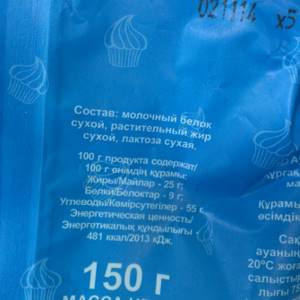
The simpler and shorter the composition of a dairy product, the better! If you have a choice between yogurt with and without modified starch, always choose plain.




